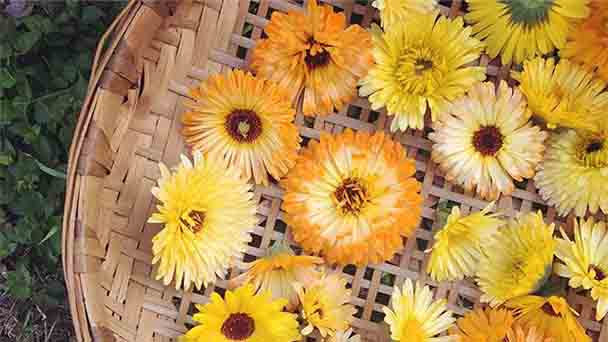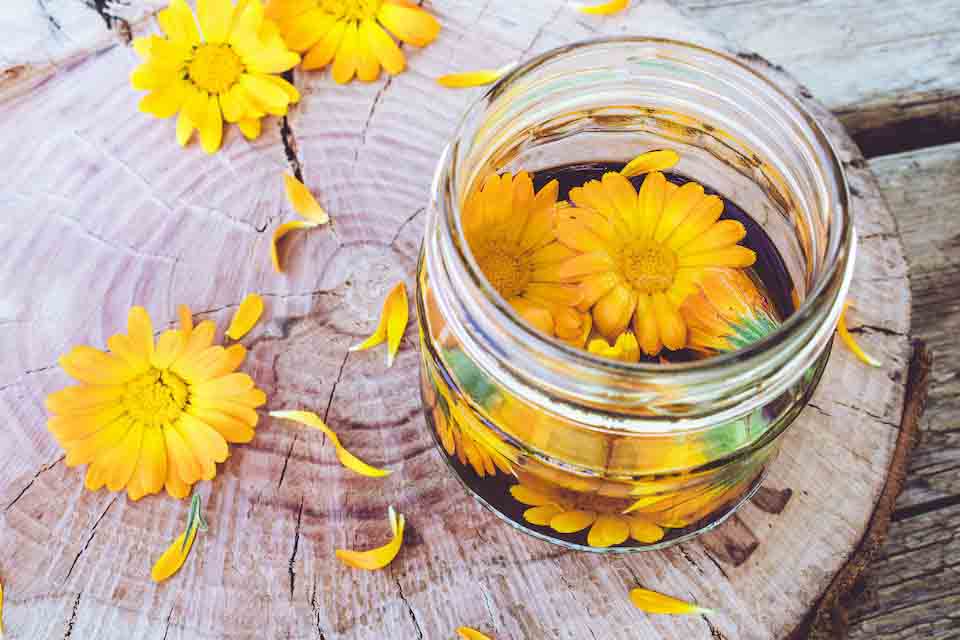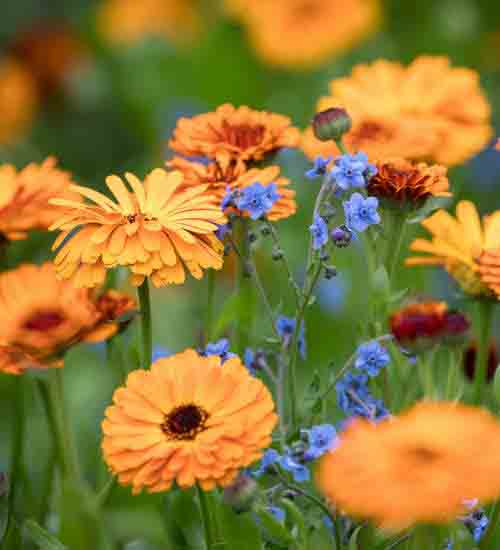Calendula Profile
Written by Joy
Nov 02 2020

Calendula is a biennial herb of the Compositae family. Its leaves are alternate and oblong. The color of marigolds is often yellow or orange. The flowering period is April to September, and the fruiting period is June to October. It likes to grow in a mild, cool climate, afraid of heat and cold. It is native to southern Europe and the Mediterranean coast.
Calendula morphological characteristicsCalendula growth habit and growing environment and distributionTemperature conditionLighting conditionsdistribution rangeCalendula efficacy and roleMedicinal valueEdible valueCalendula cultivationLand preparationSeed treatmentRelease seedlingsIrrigation and fertilization
Calendula is rich in a variety of vitamins, especially vitamin A and vitamin C, which can prevent pigmentation, increase skin luster and elasticity, slow down aging, and prevent skin from sagging and wrinkles. Almost all parts can be eaten. Its petals have the function of beauty, and the flowers contain carotenoids, tomato hydrocarbons, butterfly plum yellow, ruby yellow, volatile oil, resin, mucus, malic acid, etc. The roots of marigolds contain bitterness, Arnichol; the seeds contain glycerides, wax alcohols, and alkaloids. Ancient Egyptians believed that calendula could delay aging, while Indians respected it as a sacred flower. In the Middle Ages, people used marigolds to heal wounds and to fight the plague and the Black Death.
Calendula morphological characteristics
The flower diameter of marigolds is about 5 cm. There are yellow, orange, orange-red, white, and other colors. There are also cultivars such as double petals, curled petals, green hearts, and deep purple flowers. The whole plant is about 20 to 75 cm tall, usually branched from the base of the stem, green or somewhat glandular pilose. Basal leaves are oblong obovate or spoon-shaped.
Calendula growth habit and growing environment and distribution
Calendula is native to southern Europe and the Mediterranean coast. It likes to grow in a mild and cool climate and is resistant to heat and cold. It is required to have sufficient sunlight or slight shade, loose, well-drained, moderately fertile soil, and have a certain drought tolerance. The soil pH for calendula planting should be maintained at 6-7 so that the plants have many branches and the flowers are large and dense.Temperature condition
The suitable temperature for the growth of marigolds is 7-20 ℃, the seedlings can tolerate a low temperature of minus 9 ℃ in winter, and 0 ℃ for adult plants is suitable. If the temperature is too low, it needs to be protected by a film, otherwise, the leaves are vulnerable to freezing damage. Calendula grows excessively when the temperature is above 10℃ in winter. In summer, the temperature rises, the stems, and leaves grow vigorously, the flowers become smaller, and the petals decrease significantly. The calendula of the seedlings should be slightly wet, which is conducive to the growth of the stems and leaves and improves the cold resistance in winter. Adult plants should be slightly dry to control the growth of stems and leaves, so as not to cause excessive growth.Lighting conditions

distribution range
Calendula is native to Europe and has a long history of cultivation in Europe. After 1949, marigolds were widely cultivated in gardens and used in potted plants and flower beds. After 1980, double-petaled, large-flowered, and dwarf marigolds were introduced to China and have now become one of China's important herbal flowers.Calendula efficacy and role
Medicinal value
The main pharmacological effects are①The flower has antibacterial and anti-inflammatory effects, especially for Staphylococcus and Streptococcus. Its antibacterial ingredients are soluble in alcohol but not in the water, and the effect is better in an alkaline environment.
②The effect of lowering blood lipids. The saponins in calendula can reduce serum cholesterol, free fatty acids, phospholipids, β-lipoprotein, total lipids, and triglycerides in experimental hyperlipidemia rats, and affect liver total lipids and cholesterol. And triglycerides also have a lowering effect.
③The polysaccharides in Calendula officinalis have a strong immune-stimulating effect.

⑤ Can promote bile secretion and accelerate wound healing. In Europe, there is a custom of oral administration of calendula chrysanthemum to treat gastric and duodenal ulcers, gastritis, hepatobiliary diseases, etc. If used for gastrointestinal cancer, it can reduce symptoms of poisoning, improve appetite, sleep, etc., and it can also be used for menstrual irregularities.
Edible value
Calendula is suitable for single brewing or with green tea.You can brew it with a tablespoon of dried calendula petals, and simmer for about 3 to 5 minutes. The golden yellow tea is set against the floating golden petals, and the fragrance is curled. It is sweet and slightly bitter. You can add honey to taste. Drinking calendula tea when you have a cold can help reduce fever and reduce irritation. It also has antispasmodic and digestive effects, which is very suitable for patients with digestive ulcers. It can also promote blood circulation. It can also alleviate alcoholism, so it is also beneficial to the liver. But pregnant women should not drink calendula tea.
Calendula cultivation
Land preparation
The farmland for planting marigolds should be deep, loose, and well-drained, and air-permeable soil. The first crop should be melons, corn, and beans. When the temperature starts to rise and the arable layer is thawed, use heavy-duty rake belts as soon as possible. The depth of the rake is 20-25 cm, the surface soil is finely broken, and then the ground is suppressed to make the field level. While harrowing the ground, proper fertilization can be made according to the fertility of the soil.Seed treatment
The seeds should be dried before sowing. You'd better choose a sunny and windless day and spread the seeds on the tent or concrete floor. The thickness is about 1 cm, and it is exposed for 4-6 hours, turning once every 1 hour. Through ultraviolet radiation, pathogenic bacteria on the surface of seeds are killed, seed vigor is enhanced, and the germination rate is increased.
Gardeners can use a seeding punch with a diameter of 3 to 5 cm to punch holes at a distance of 35 cm from the centerline of the film, with a hole spacing of 30, and a hole depth of 7 to 8 cm. There are 3 seeds or 4 seeds per hole, and the covering soil should be fine soil with moist sand.
Release seedlings
Generally, seedlings can emerge 5-10 days after sowing. Due to the time of emergence, sowing depth, and soil type. It is closely related to the local temperature. When the seeding is too deep, the soil moisture is too high or the temperature is too low, the emergence time will be delayed. When the seedling is about 5 cm high. When the weather is right, the seedlings should be released in time by breaking the membrane and avoid burning the seedlings.Thinning, fixed seedling
When the seedling grows 2 to 3 true leaves, thin the seedlings when the seedling height is about 20 cm, and leave 2 strong seedlings in each hole; when 3 pairs of true leaves are fixed, leave 1 healthy and disease-free seedling in each hole; The seedlings and diseased seedlings are removed, and the seedlings are transplanted to supplement the seedlings. Seedling density is based on the principle of fertile land should be thin, lean land should be dense. When the height of the seedlings is about 30 cm, combine weeding, cultivating, and loosening the soil, taking soil from the ditch, and planting on the base to make the base produce adventitious roots to prevent lodging and breaking.Irrigation and fertilization
Calendula is a moderately water-requiring plant. Lack of water will result in short plants. Excessive irrigation will cause plants to grow longer, which will reduce the yield due to reduced flower size. Generally, water should be irrigated promptly based on the rainfall of the year. In the flowering period, it is necessary to combine fertilization and timely irrigation to promote more flowering and large flowers. Extra-root topdressing can be applied to the fields in the lack of fertilizer and the field during the flower harvest period to promote plant growth and increase the production of flowers in the later period.Latest Updated
- Benefits of Bugleweed - 7 Science-backed Health Benefits
- Bugleweed Dangers & Side Effects - Is It Poisonous?
- How to Plant Evergreen Trees - What You Should Know
- When to Plant Evergreens - Grow Guide for Evergreen Trees
- 12 Wonderful Evergreen Shrubs for Your Garden
- 12 Popular Evergreen Plants with Pictures for Beginners
- When And How To Prune A Lilac Bush Like a Pro
- How to Grow & Care for Lilac Vine (Hardenbergia Violacea)
- Japanese Lilac Tree (Syringa Reticulata) Care & Propagation Guide
- Shumard Oak Pros and Cons - What to Know
Popular Articles
- Winter maintenance of Antirrhinum Majus
- How to Grow Terminalia Mantaly Tree
- How to Grow and Care for Crossostephium Chinense
- How to grow Antirrhinum Majus in spring
- Peristeria Elata (Dove Orchid) Profile: Info & Care Guide
- Underwatered Snake Plant (Sansevieria Trifasciata) - Signs And How To Fix
- How to Care for Brazilian Jasmine Plant (Mandevilla Sanderi)
- How to Grow & Care for Graptopetalum Purple Delight in Summer
- Rosa Chinensis (China Rose): Plant Growing & Care Tips
- How to Care for Baby Sun Rose (Aptenia Cordifolia)